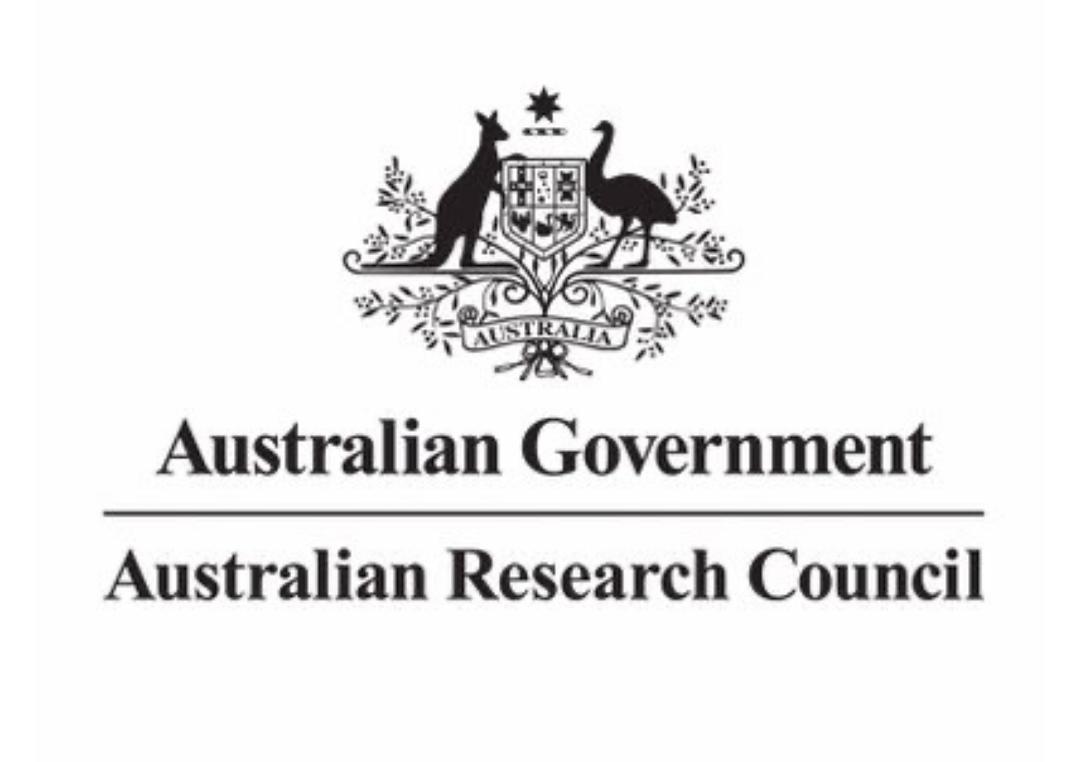Morphological and Genetic Characterisation of Seahorse Species (Syngnathidae: Hippocampus spp.) in the Waters of Sabah, Malaysia
DOI:
https://doi.org/10.51200/jtbc.v22i.5410Keywords:
Syngnathidae, Barbour’s seahorse, Tiger-tail seahorse, morphology, phylogenyAbstract
Seahorse are teleosts belonging to the genus Hippocampus which consists of 57 species. Among the 57 species, only 12 species exist in Malaysian waters and 11 species in the coastal waters of Sabah. These records and checklists pre-date 2015, and no known studies or field surveys have been conducted in Sabah since then. In this study, a field survey was conducted in selected areas of Sabah waters to document the species composition through morphological and genetic identification. Out of the 11 species that were recorded previously, only two species (Hippocampus barbouri and Hippocampus comes) were found and identified using taxonomic keys. CO1 mitochondrial gene was used for genetic identification and phylogenetic tree reconstruction of Maximum Likelihood (ML). The dataset comprises sequences of 11 species from Malaysian waters (excluding H. satomiae). The genetic distances, i.e., p-distances, for H. barbouri and H. comes were recorded to be less than 1% inter-species and more than 10% intra-species, which confirmed the distinct species genetically. Furthermore, findings highlight the urgency of implementing conservation strategies to protect the remaining populations, in light of limitations of this study.
References
Ambo-Rappe R, La Nafie YA, Marimba AA, Unsworth RK (2021) Seagrass habitat characteristics of seahorses in Selayar Island, South Sulawesi, Indonesia. Aquaculture, Aquarium, Conservation & Legislation 14(1): 337–348.
Aylesworth L, Loh TL, Rongrongmuang W, Vincent (2017) Seahorses (Hippocampus spp.) as a case study for locating cryptic and data-poor marine fishes for conservation. Animal Conservation 20(5): 444–454. https://doi.org/10.1111/ACV.12332.
Carter JD (2003) The effects of preservation and conservation treatments on the DNA of museum invertebrate fluid preserved collections. A Thesis Presented for the Degree of Master of Philosophy. Pp 90.
Casey SP, Hall HJ, Stanley HF, Vincent ACJ (2004) The origin and evolution of seahorses (genus Hippocampus): A phylogenetic study using the cytochrome b gene of mitochondrial DNA. Molecular Phylogenetics and Evolution 30(2): 261–272. https://doi.org/10.1016/J.YMPEV.2003.08.018.
Chaiphongpachara T, Changbunjong T, Laojun S, Nuteps T, Suwandittakul N, Kuntawong K, Sumruayphol S, Ruangsittichai J (2022) Mitochondrial DNA barcoding of mosquito species (Diptera: Culicidae) in Thailand. PLOS ONE 17(9). https://doi.org/10.1371/JOURNAL.PONE.0275090.
Chao Z, Liao J, Liang Z, Huang S, Zhang L, Li J (2014) Cytochrome C oxidase subunit I barcodes provide an efficient tool for Jinqian Baihua She (Bungarus parvus) authentication. Pharmacognosy Magazine 10(40): 449. https://doi.org/10.4103/0973-1296.141816.
Chen CA, Abd Halid NF, Lim ACO, Christianus A, Shapawi R (2021) Distribution of seahorse species in Malaysia, harvesting trends and conservation concerns – A review. Borneo Journal of Marine Science and Aquaculture (BJoMSA) 5(2): 83–91. https://doi.org/10.51200/BJOMSA.V5I2.3611.
Choo CK, Liew HC (2003) Spatial distribution, substrate assemblages and size composition of sea horses (Family Syngnathidae) in the coastal waters of Peninsular Malaysia. Journal of the Marine Biological Association of the United Kingdom 83(2): 271–276. https://doi.org/10.1017/S0025315403007069H.
Cohen A, Valenti WC, Planas M, Calado R (2017) Seahorse aquaculture, biology and conservation: Knowledge gaps and research opportunities. Reviews in Fisheries Science & Aquaculture 25(1): 100–111. https://doi.org/10.1080/23308249.2016.1237469.
Curtis JMR, Vincent ACJ (2005) Distribution of sympatric seahorse species along a gradient of habitat complexity in a seagrass-dominated community. Marine Ecology Progress Series 291: 81–91. https://doi.org/10.3354/MEPS291081.
Darriba D, Taboada GL, Doallo R, Posada D (2012) JModelTest 2: More models, new heuristics and parallel computing. Nature Methods 9(8): 772. https://doi.org/10.1038/NMETH.2109.
De Brauwer M, Hobbs JPA, Jompa J (2020) Widespread low abundance despite habitat availability elevates extinction risk in pygmy seahorses. Coral Reefs 39(4): 847–852. https://doi.org/10.1007/S00338-020-01913-X/FIGURES/2.
Delunardo FAC, Carvalho LR, Silva, BF, Galão M, Val AL, Chippari-Gomes AR (2015) Seahorse (Hippocampus reidi) as a bioindicator of crude oil exposure. Ecotoxicology and Environmental Safety 117: 28–33. https://doi.org/10.1016/J.ECOENV.2015.03.016.
Foster AN, SJ, Vincent DACJ (2004) Life history and ecology of seahorses: implications for conservation and management. Journal of Fish Biology 65(1): 1–61 https://doi.org/10.1111/j.1095-8649.2004.00429.x.
Faleiro F, Narciso L (2011) The bigger the better: An assessment of reproductive potential in seahorses. Reproduction, Fertility and Development, 2: 37–44.
Hao WX, Zhang YY, Wang X, Qu M, Wan SM, Lin Q (2025) Genetic diversity and environmental adaptation signatures of the great seahorse (Hippocampus kelloggi) in the coastal regions of the Indo-Pacific as revealed by whole-genome re-sequencing. International Journal of Molecular Sciences 26(3): 1387. https://doi.org/10.3390/IJMS26031387/S1.
Knowles L (2009) Statistical phylogeography. Annual Review of Ecology, Evolution, and Systematics, 40: 593–612. https://doi.org/10.1146/ANNUREV.ECOLSYS.38.091206.095702.
Kuiter R (2000) Seahorses. Pipefishes and their relatives: A comprehensive guide to syngnathiformes. https://books.google.com.my/books/about/Seahorses_Pipefishes_and_Their_Relatives.html?id=unJMAAAACAAJ&redir_esc=y (Accessed 22 March 2022).
Kumar S, Stecher G, Li M, Knyaz C, Tamura K (2018) MEGA X: Molecular evolutionary genetics analysis across computing platforms. Molecular Biology and Evolution 35(6): 1547. https://doi.org/10.1093/MOLBEV/MSY096.
Kumaravel K, Ravichandran S, Balasubramanian T, Sonneschein L (2012) Seahorses - A source of traditional medicine. Natural Product Research 26(24): 2330–2334. https://doi.org/10.1080/14786419.2012.662650.
Lim ACO, Chong VC, Wong CS, Choo CK (2011) Diversity, habitats and conservation threats of syngnathid (Syngnathidae) fishes in Malaysia. Tropical Zoology 24: 193–222.
Lourie SA, Green DM, Vincent ACJ (2005) Dispersal, habitat differences, and comparative phylogeography of Southeast Asian seahorses (Syngnathidae: Hippocampus). Molecular Ecology 14(4): 1073–1094. https://doi.org/10.1111/J.1365-294X.2005.02464.X.
Lourie SA, Pollom RA, Foster SJ (2016) A global revision of the seahorses Hippocampus Rafinesque 1810 (Actinopterygii: Syngnathiformes): Taxonomy and biogeography with recommendations for further research. Zootaxa, 4146(1): 1–66. https://doi.org/10.11646/ZOOTAXA.4146.1.1.
Lourie SA, Pritchard JC, Casey SP, Truong SK, Hall HJ, Vincent ACJ (1999) The taxonomy of Vietnam’s exploited seahorses (family Syngnathidae). Biological Journal of the Linnean Society 66(2): 231–256. https://doi.org/10.1111/J.1095-8312.1999.TB01886.X.
Ng RMY, Lim ACO, Chin SL, Majib NB, Hussein MA, Then AYH (2024) Quantifying non-target seahorse fisheries and domestic traditional medicine-based trade in Malaysia. Fisheries Research 281: 107188. https://doi.org/10.1016/J.FISHRES.2024.107188.
Ng WL, Chen CA, Mustafa S, Leaw CP, Teng ST, Zakaria SNFB, Tuzan AD, Chan TY (2022) A new record of the spiny lobster, Panulirus femoristriga (von Martens, 1872) from the coastal waters of Malaysia, with revision of global distribution. Biodiversity Data Journal 10. https://doi.org/10.3897/BDJ.10.E77973.
Ng WL, Chen CA, Teng ST, Tuzan AD, Mullungal MN, Chan TY (2023) A new record of Panulirus homarus homarus (Panulirus spp.) from Malaysia waters with its molecular phylogeny. Borneo Journal of Resource Science and Technology 13(2): 175–185. https://doi.org/10.33736/BJRST.6033.2023.
Nurilmala M, Nurhayati KH, Butet NA, Sudrajat AO (2019) Molecular marker based on 16S rRNA gene for seahorse (Hippocampus spp.) from Bintan Island-Indonesia. IOP Conference Series: Earth and Environmental Science 278(1): 012054. https://doi.org/10.1088/1755-1315/278/1/012054.
Nuruddin AA, Isa SM (2013) Trawl fisheries in Malaysia – Issues, challenges, and mitigating measures. Paper. APFIC Regional Expert Workshop on Tropical Trawl Fishery Management, Phuket, Thailand. Pp. 3.
Perante NC, Pajaro MG, Meeuwig JJ, Vincent ACJ (2002) Biology of a seahorse species, Hippocampus comes in the central Philippines. Journal of Fish Biology 60(4): 821–837. https://doi.org/10.1111/J.1095-8649.2002.TB02412.X.
Project Seahorse (2022). https://projectseahorse.org/ (Accessed 17 September 2024).
Sanaye SV, Khandeparker R, Rayadurga AS, Shivaramu MS, Kankonkar H, Narvekar J, Gauthankar M (2020) Morphological and molecular evidence for first records and range extension of the Japanese seahorse, Hippocampus mohnikei (Bleeker 1853) in a bay-estuarine system of Goa, central west coast of India. PLOS ONE 15(3): e0220420. https://doi.org/10.1371/JOURNAL.PONE.0220420.
Lourie S, Foster S, Cooper E, Vincent A (2004) A guide to the identification of seahorses: Project Seahorse and TRAFFIC North America. Pp. 5–87.
Shapawi R, Anyie AL, Hussien MAS, Zuldin WH (2015) Species and size composition of seahorses (genus Hippocampus, family Syngnathidae) in the coastal waters and local market of Kota Kinabalu, Sabah, Malaysia. Tropical Life Sciences Research, 26(2).
Stölting KN, Wilson AB (2007) Male pregnancy in seahorses and pipefish: beyond the mammalian model. BioEssays 29(9): 884–896. https://doi.org/10.1002/BIES.20626.
Panithanarak T (2020) Phylogeography of three commercially important seahorses (genus Hippocampus) in Thai waters: an implication from collective sequence data. Journal of Fisheries and Environment 44(2): 1–15.
Thangaraj M, Lipton AP (2011) Assessment of genetic variation in closely related seahorse species (genus: Hippocampus) using mtDNA marker. Indian Journal of Biotechnology 10(1): 140–142.
Thomsen PF, Willerslev E (2014) Environmental DNA-An emerging tool in conservation for monitoring past and present biodiversity. Biological Conservation 183: 4–15 https://doi.org/10.1016/j.biocon.2014.11.019.
Trewhella S, Hatcher J (2017) In the Company of Seahorses. Princeton University Press. Pp. 128–151.
Wallis C. (2004) Seahorses: Mysteries of the Oceans. Bunker Hill Publishing, Inc. Pp. 7–8.
Wilson AB, Vincent A, Ahnesjö I, Meyer A (2001) Male pregnancy in seahorses and pipefishes (family Syngnathidae): Rapid diversification of paternal brood pouch morphology inferred from a molecular phylogeny. The Journal of Heredity 92(2): 159–166. https://doi.org/10.1093/JHERED/92.2.159.
Wood EM, Ng JV (2016) Acoustic detection of fish bombing: Final report January 2016. Semporna Islands Project / Marine Conservation Society. Pp. 29.
Woodall LC, Otero-Ferrer F, Correia M, Curtis JMR, Garrick-Maidment N, Shaw PW, Koldewey HJ (2018) A synthesis of European seahorse taxonomy, population structure, and habitat use as a basis for assessment, monitoring and conservation. Marine Biology 165(1): 1–19. https://doi.org/10.1007/S00227-017-3274-Y.
Zhang Y, Pham NK, Zhang H, Lin J, Lin Q (2014) Genetic Variations in two seahorse species (Hippocampus mohnikei and Hippocampus trimaculatus): Evidence for middle pleistocene population expansion. PLoS ONE 9(8): e105494. https://doi.org/10.1371/JOURNAL.PONE.0105494.
Zhu SR, Fu JJ, Wang Q, Li JLe (2013) Identification of Channa species using the partial cytochrome c oxidase subunit I (COI) gene as a DNA barcoding marker. Biochemical Systematics and Ecology 51: 117–122. https://doi.org/10.1016/J.BSE.2013.08.011.
Published
How to Cite
Issue
Section
License
Copyright (c) 2025 The JTBC allows authors to retain the copyright of their publications without restrictions, but authors will grant the JTBC the right of first publication, and other non-exclusive publishing rights. Authors retain the right to use the substance of the article in their future works, provided that its prior publication in this journal is acknowledged.

This work is licensed under a Creative Commons Attribution-NonCommercial 4.0 International License.
BY: credit must be given to the creator.
NC: Only noncommercial uses of the work are permitted.
This journal provides open access to its content under CC BY-NC 4.0 on the principle that making research freely available to the public supports greater international collaboration and information exchange.











